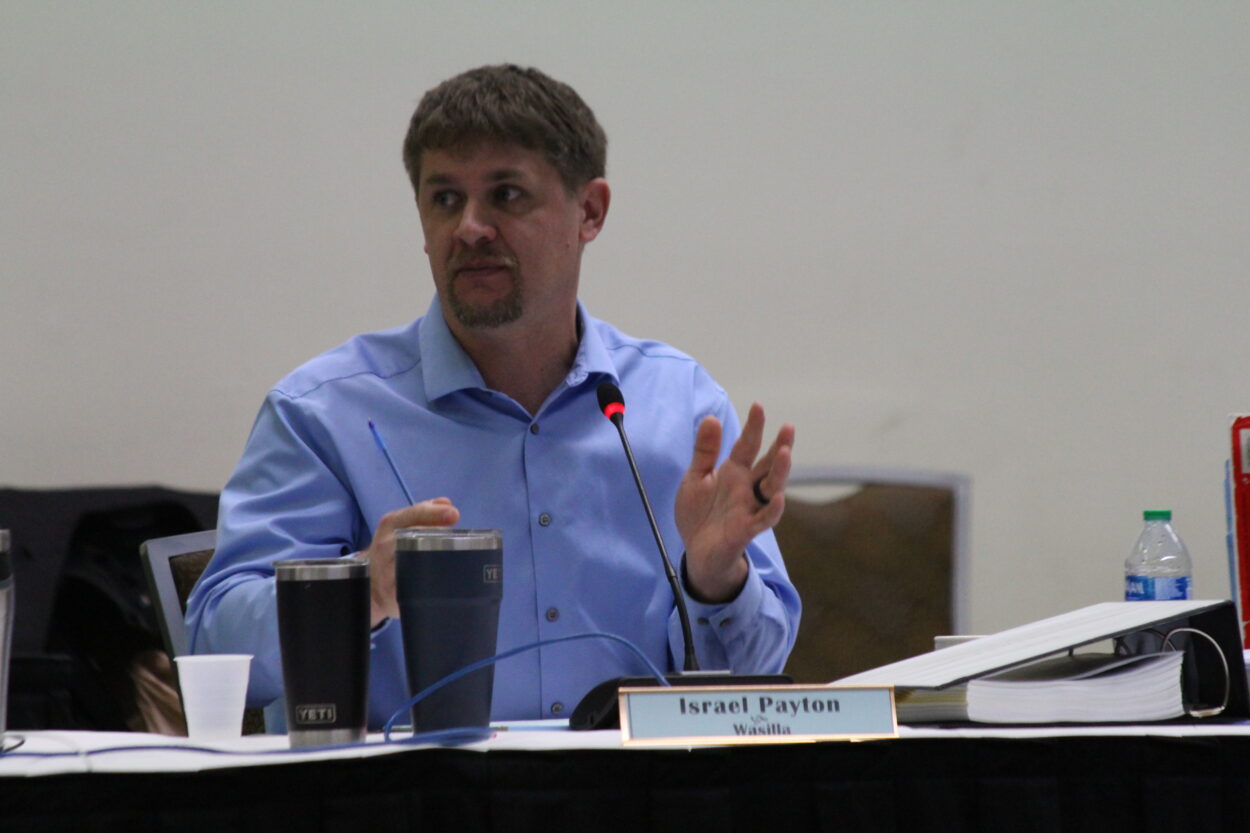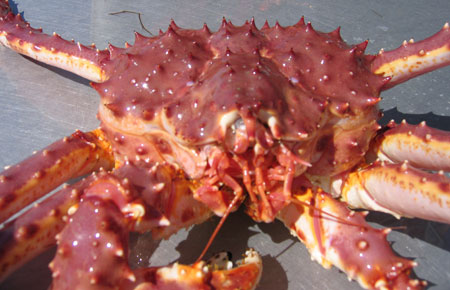
Alaska Board of Fisheries this week voted down a red king crab proposal that was supported by both the Alaska Department of Fish and Game and fishermen. It would have created the possibility of holding a limited fishery in a region that hasn’t been open for years. KFSK’s Angela Denning reports from Petersburg:
There’s been only one red king crab fishery in the last decade in Southeast. That’s because the state’s estimations of crab stocks have repeatedly fallen short of the 200,000 pounds threshold. That number comes from surveys the state conducts in some areas.
The board was asked to consider a proposal that would split a limited harvest among permit holders when estimates were too low for a regular competitive fishery. The harvest poundage would be set by the state.
The proposal was written together by state managers and industry groups through several meetings.
Andrew Olson coordinates the state’s crab management in Southeast. He presented the proposal to the board, saying it would allow for a limited harvest and give managers crab data they need. He said they could limit the fishery to areas where they don’t survey.
“We have no stock assessment survey in those non-surveyed areas and [it would] allow us to see where other populations of red king crab and blue kind crab are to get more informed on what the fishermen are seeing out in the field,” Olson said. “Then we can integrate that into our stock assessment model to be more informed.”
Fishermen have repeatedly said there are more red king crab than managers are estimating.
The proposal could have allowed fishing if the estimate of legal male crab was at least 50 percent of the average. If the harvest level was above 200,000 pounds, management would return to a competitive fishery. The proposal would have expired in three years unless renewed by the board.
It also would have allowed multiple permit holders on a vessel fishing together.

The crab proposal was backed by several regional industry groups: the Southeast Alaska Fishermen’s Alliance, the King and Tanner Task Force, and the Petersburg Vessel Owners Association, which represent hundreds of fishermen. The price of red king crab has gone up in recent years and fishermen say it’s worth fishing for a small set harvest. The last opening paid over $10 per pound.
Max Worhatch is a fisherman from Petersburg.
“I think it’s a good idea to do this,” Worhatch said. “I think it’s going to give some economic activity and it will be warranted. It’s a slow fishery, it shouldn’t do any harm.”
The current management plan has different harvest goals for different areas and fishermen can choose where they want to go. Fish and Game’s Olson told the board it’s hard to manage that way because of the bays and inlets that make up Southeast.
“The fishery goes very fast,” Olson said. “Our past fisheries in those survey areas have been 24 hours, which makes it very fast. So, at a lower level, to slow it down, equal quota share will allow us to manage more effectively and precise by being able to have that tool in place.”
He said the bays and inlets have genetically distinct populations of crab and they need more data on them.
In a subsequent interview with KFSK, Kathy Hansen, Executive Director of the Southeast Alaska Fisherman’s Alliance, said using the term “equal quota shares” was a mistake. It shouldn’t have been used in deliberations between the state and the board. It was also written into the final draft of the proposal.
“By calling it an equal share, that brings the thought of it being more a property right and a guarantee to a harvest,” Hansen said, “and that was not what the department and industry were working together on.”
She said the proposal combined managing the fishery while giving opportunity to the fishermen.
But the incorrect terminology stuck with board members.
Board member Israel Payton of Wasilla spoke against the idea of quota shares like those used in the federal managed halibut fishery.
“I think the board is defaulting, turning some of these fisheries into basically, setting policy, and turning them into a quasi-IFQ fishery,” Payton said.
Board member Gerad Godfrey of Eagle River spoke in favor of a free market and against quota shares, in general.
“I personally believe in the spirit of competition and not necessarily the egalitarian approach of let’s just equalize it,” said Godfrey.
Board Chair Märit Carlson Van-Dort of Anchorage said she also didn’t like the idea of quota shares but could support the proposal because it was temporary and the state could gain data.
“I do think that information gathered through the fleet for a discreet amount of time, that being a period of three years, may be useful to the department,” she said.
The proposal ultimately died with a 2-3 vote. Payton, Godfrey, and John Wood voted against it while Carlson Von-Dort and McKenzie Mitchell supported it. One Board of Fish member, John Jensen of Petersburg, recused himself and one board seat is vacant.
Southeast Alaska Fisherman’s Alliance’s Kathy Hansen said they’ll plan to bring up the proposal again at the Board’s next Southeast meeting in three years using different wording.










